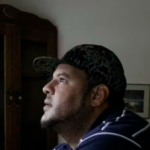By TOM MURPHY
AP Business Writer
NEW YORK (AP) _ WellPoint CEO Joseph Swedish says that when people ask what a doctor’s appointment will be like in the future, they assume that patients will physically have to visit an office.
They’re wrong, the insurance executive told The Associated Press during an interview at its New York headquarters.
“I would argue that will no longer be necessary in the not too distant future,” Swedish said after pulling out a smartphone to show how it can be used to help remotely diagnose problems like ear infections.
Swedish says adapting to technology is a top priority for him as he leads the nation’s second largest health insurer. The U.S. health care overhaul also is a big focus for WellPoint Inc., which is one of the biggest players in the overhaul’s public insurance exchanges. The largely online exchanges debuted last fall and helped roughly 8 million people find coverage.
Swedish has gotten a good reception from Wall Street since taking the top job at WellPoint last year after a long career running large hospital networks. The Blue Cross Blue Shield insurer’s stock has climbed about 76 percent since WellPoint named him CEO _ more than twice the growth of the Standard & Poor’s 500 index over the same period.
During the AP interview, Swedish talked about a variety of topics, including how WellPoint is adapting its coverage to keep up with rapidly changing technology and about getting customers prepared for health care decisions they may not be ready to make.
Below are four takeaways from the interview:
RIDING TECHNOLOGY WAVES
WellPoint is adapting to technology by doing things like covering visits to workplace health kiosks, where a company’s employees can speak live with a doctor and get diagnosed without leaving the office. It’s also testing a program that allows a mom to attach an otoscope to her smartphone and let a doctor remotely peer inside her child’s ears. That doctor can then electronically file a prescription, and the mom doesn’t have to miss work for the doctor’s appointment.
These advances can make care access easier, and they cater to younger generations that have grown up with smartphones.
“We really have to pivot and adapt to the demands of the consumer,” Swedish said.
DATA MINING
Marketers have used so-called big data for years to figure out where consumers spend their money. Swedish calls the 581 million medical claims that WellPoint processes every year an “incredible data mine” that can offer valuable insights. Data mining can help WellPoint determine whether patients are filling prescriptions and if they need reminders about follow-up care.
Insurers see what some may call a form of cyber nagging as ways to improve care and cut costs in the long run. That happens when the diabetic who is prodded to keep up with his care doesn’t develop heart disease and wind up in the emergency room with a heart attack.
A TOUGH TRANSITION
The days of people simply using whatever health plan their employer offered are starting to fade. They now face choices, so they have to figure out which plan offers the best doctors for their needs or which coverage has manageable out-of-pocket costs.
Insurance also isn’t covering as much of the bill as it used to, which exposes patients more to health care costs. That means they have to figure out how to shop around for both the best deal and good quality.
Swedish said consumers aren’t yet ready for this industry-wide shift toward health care shopping, and it will be a difficult transition.
“We now have a responsibility to give people information that they can understand,” he said.
THE OVERHAUL PART II
Technology glitches and crashes marred last year’s debut of the health care overhaul’s public insurance exchanges. The federal government labored feverishly to improve the exchanges, but Swedish still expects some problems when a new enrollment period starts this fall for insurance that begins in 2015. Millions will seek coverage and those who signed up last year also will have to re-enroll.
“My concern is (the exchanges) may not be as fluid and flexible and accommodating as is necessary,” he said.










